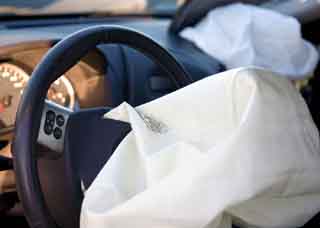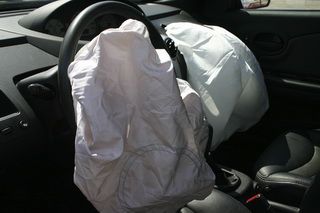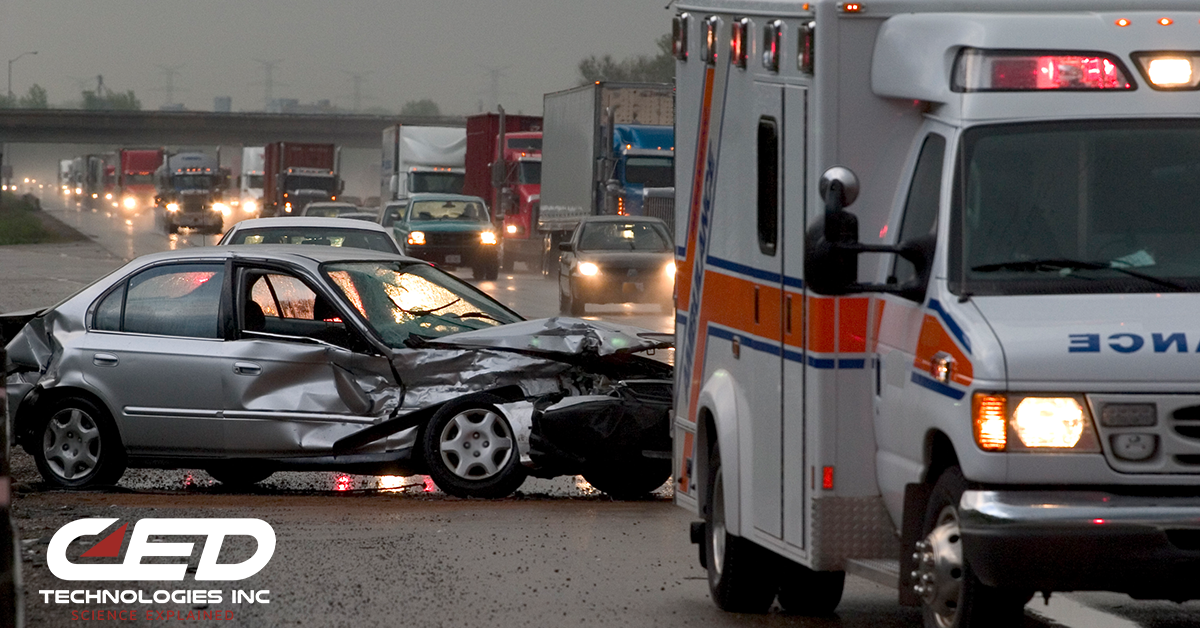Since model year 1998, all new cars sold in the United States have been required to have airbags on both driver and passenger sides. Soon after came seat-mounted and door-mounted side airbags, and today some cars go far beyond, having six, eight, or even 10 airbags.
The National Highway Traffic Safety Administration statistics showed that airbags saved more than 2,500 lives last year and reduced the risk of dying in a direct frontal crash by about 30 percent. Due to criticism and safety issues in the past, auto makers are now developing smarter airbag systems that can adjust deployment force and speed to different crash situations. Other systems can adjust deployment based on passenger size, seating position and speed at impact. If a fault is detected, the air bag system is usually deactivated and a warning light notifies the driver of a problem.
One thing all airbags have in common are crash sensors. By design, an airbag should only deploy in a frontal collision that is severe enough to trigger the control electronics or firing pin. They should not go off in rollovers, side or rear collisions, although that sometimes occurrs. A lot can happen during an accident to trick airbag sensors into thinking a frontal collision is occurring, when in fact, it really is not. The crash sensor reacts to sudden deceleration resulting from a frontal impact to inflate the airbags. So how can it be determined what caused the sensors to react?
The air bag control module is designed to deploy restraint system components when the crash sensor reacts. It can retain “crash data” as “events” in an “event data recorder” and self-checks the sensing system every time the engine is started. By using a Crash Data Retrieval System (CDR) after an accident in which airbags were deployed, data can be retrieved from late model cars, light trucks, commercial trucks and SUV's to further analyze and investigate the accident. In conjunction with a complete crash analysis, information such as engine speed, vehicle speed, braking status, throttle percentage and seatbelt usage can be examined to paint a more complete picture of the accident. Obtaining a CED crash investigator early in the process can increase the likelihood of a successful CDR download to retrieve information.
Meet the Expert: Patrick J. Hudson, Ph.D., P.E.
Patrick J. Hudson, Ph.D., P.E. is one of CED's marine/maritime experts. He has 20 years of experience in coastal engineering, naval architecture, ports and harbors, technical analysis for environmental documentation, independent design evaluation and analysis and systems engineering support. Dr . Hudson graduated from the United States Naval Academy with a Bachelor of Science degree in Naval Architecture and holds a Masters degree in Civil Engineering from Johns Hopkins University and a Ph.D. in Ocean Engineering also from Johns Hopkins University.
Dr. Hudson is a registered Professional Engineer in Maryland and Virginia and has taught courses at the Naval Academy and Johns Hopkins University. Dr. Hudson has a wealth of experience including service as a naval officer, as a naval architect in the maritime industry and in academia where he not only taught courses but also conducted research and development. Some of Dr. Hudson's focus areas are described below
• Ocean Engineering Design and analysis of offshore structures, buoys, mooring systems, and underwater vehicles, including structural, hydrodynamic, and geotechnical analyses.
• Coastal Engineering Design of seawalls, breakwaters, bulkheads, revetments, and jetties. Physical and computational modeling of waves, tides and coastal erosion
•Naval Architecture Ship design, stability analysis, resistance and powering predictions, dry-docking calculations, and preparation of documentation for heavy lift transport by float-on/float-off vessels.
• Ports and Harbors Cargo throughput, port master planning, terminal layout, and design of wharves, piers, and fendering systems.
• Technical Analysis Broad range of technical studies to support environmental documentation required by NEPA and CEQA.
• Design Evaluation Independent evaluation of current and proposed engineering designs, including structural mechanics, fluid dynamics, thermal management, material properties, and cost estimates. Facilitation of and participation in preliminary and critical design reviews.






